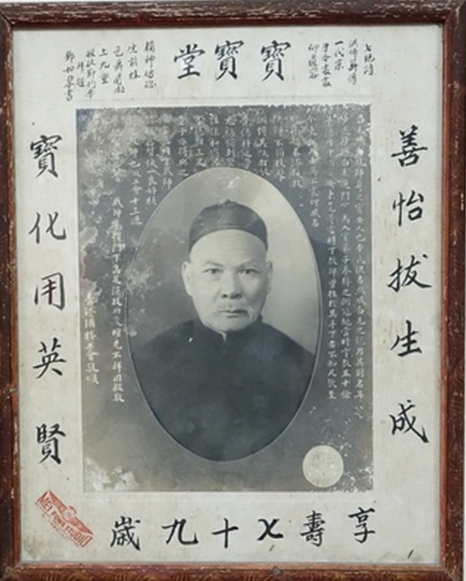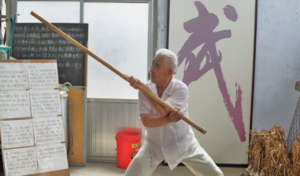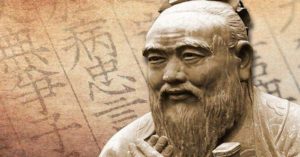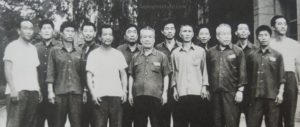Crippled boxing, Fists of the drunken eight immortals, disabled single arm boxing, chopsticks and bowl weaponry are but some of the obscure yet interesting methods of Hung Fut Pai. With a history of over 200 years this fascinating derivative of Southern Hung boxing has developed into a unique and formidable combat system.
Hung Kuen – The root of Southern Lingnan Boxing
Hong Xiguan (洪熙官, est. 1743-1806) whom is recognized as the founder of Hong Quan (Hung Kuen) had many disciples during his time in Guangdong under the efforts of the Tian Di Hui (Heaven and Earth Society). One of his students included Li Zukuan (李祖寬, c. Lei Cho Foon) whose father had been prosecuted by the Qing government, was to become a capable Master and the founder of Hung Fut Pai.
Li Zukuan, practiced diligently under Hong Xiguan and mastered key boxing methods as well as becoming involved in rebellious activities which were to become an issue many years later after Hong Xiguan’s departure. After being charged for crimes, the Qing government sought his capture and in a duel Li Zukuan killed an official. To escape it is said he fled to Bapai Shan (八排山) where he become a monk at the Qinghua Temple (it was common in those days for many rebels to become monks as it requires the lost of identity, which makes it difficult to trace down for officials), his buddhist name was Shi Yunmi (释云弥, c. Sek Wunnai). It is at the temple that he practiced his skills further and developed a method that he called the Fa Xiang Zhuang Zhang Gong, which was a specialised form of Iron Palm training. As a result, the style became known as Hung Kuen Fut Jeung (洪拳佛掌 Hung Boxing, Buddha Palms) which was simplified as “Hung Fut Pai”.
Taiping Heavenly Kingdom – Hung Fut Pai rises
Only when the Taiping Tianguo (Taiping Heavenly Kingdom) rising occured (during 1850-1864) originating in the southern areas (Guangxi followed by Guangdong and onwards north), did Shi Yunmi descended the mountain and sought disciples worthy to study to join the anti Qing activities continuing his efforts from earlier times. At his advanced age he took on a few (many to be killed in confrontations with the Qing armies) of which the most recognized was Huang Yongji (黃永基 c. Wong Wengkei), whom became his resident disciple on Jinshan Temple mastering the Hung Fut system. A commemorative generation couplet “Shan Yi Ba Sheng Cheng Bao Hua Yong Ying” was then written by Huang Yongji in honour of his teacher and a small housing for remains was named Shanshan Tang (善善堂).
After the passing of monk Shi Yunmi, his disciple Huang Yongji opened a school in Foshan (c. Futsan) naming it Yiyi Tang (怡怡堂). His key disciple was said to have come about after an accident between government officials and a young man, Li Tongkuan (李同宽, c. Lei Tongfoon) who later after over ten years of dedicated training became the third generation master of Hung Fut, having established the Baba Tang (拔拔堂) where he taught in Gaoyao county, Guangdong Province. Li Tongkuan is also credited with having developed the 8 Drunken Immortals techniques of Hung Fut.
The fourth generation was to be a young Daoist priest named He Daodan (何道旦 c. Ho Doudan) who after many years of study with Lo Tongkuan, developed a set of fourteen elbows which further developed the Hung Fut system. Originally only Daoists in the temple (of the Shengsheng Tang) were taught but to ensure the survival of the style (as priests are concerned with religious practices primarily) the style had to be taught to alayman. It was the fifth generation Wu Tong (吳通, c. Ng Tong) who used to work around the temple on general duties that was to become the inheritor of the system from He Daodan. Orignally just observing the practices of the daoists, he was later called upon by He Daodan and later formally taught the complete system. Wu Tong was nicknamed Bai Mou Tong (White Hair Tong) due to his hair. At the request of his teacher, Wu Tong descended the temple and started the Chengcheng Tang in Foshan (c.Futsan), Guangdong province.
White haired devil – Hung Chiu Sing
Hung Fut started with great beginnings being involved in rebellious activities of the Tiandi Hui (Heaven and Earth Society) and of the Taiping Tianguo (Heavenly Kingdom of Greater Peace), but later became more obscure. It was not until the sixth generation under the most famous master of the style Hong Zhaocheng (c. Hung Chiusing) that the style was to prosper and develop.
Hong Zhaocheng (洪照成, c. Hung Chiusing 1865-1944) as a boy used to peak into the teachings of Wu Tong, trying to learn the techniques and then practicing independently. Upon observing, the Master Wu Tong decided to take the young boy a student and after many years was to become the most important inheritor of the style. Hong Zhaocheng also received advanced lessons by recommendation of hist teacher from other masters including Luo Yuan. (It should be noted that there are some historians that believe Hung Chiusing had studied Hung Kuen, Cai Kuen and Lei Kuen as the basis of developing Hung Fut).
During his advanced years as a result of his white hair like his teacher was nicknamed “Bai Mou Zhao” and as a result of injury had developed one of the most unique methods of Hung Fut called the Si Da Can Quan (4 Great Crippled Fists). In approximately 1925, Master Hong moved to Hong Kong with his family and with the assistance of his sons (especially Hong Yaozong) he promoted the style across Hong Kong, bringing Hung Fut to the world.
Master Hong taught many students and some of the most well known were his sons Hong Shanbao, Hong Yinshu and Hong Yaozong, as well as disciples Hong Yusheng, Li Wen, Hung Huiting, Hung Liting, Hung Liangui, Liu Gengzhi, Wang Liantao, Ye Xianghang, Zhou Guo, Hu Zhalun, Cai Shan, Mai Qiu, Hong Peifa, Liang Rici, Tan Xi, Hu Shaonan, Deng Zhuohua, Deng Rudong, Ceng Jinghai, Li Saisheng, Xiao Jiu, Hong Qiangsheng and many others.
Features and Characteristics
Hung Fut maintains the practice of relatively wide and low stances, ensuring like Hung Kuen great stability and balance from which to generate solid power. In practice one of the obvious features the prominence of the left hand from which most dual sided techniques start with left but are equally balanced throughout in practice (one of my earlier teachers also had learnt Hung Fut a little and maintained this practice throughout his teaching – the idea was if your left hand (given a right handed person) could do it then it would be easier for the more co-ordinated right hand to figure it out). In combat often it is often left side leading, this was thought to enhance the roles of the left as the lead test and blocking side with the accurate right awaiting behind. The 14 Bridges : Whilst Hung Kuen is well known for it’s 12 bridges, Hung Fut also has similar concepts in 14 bridges – these are Biao (Dart), Gou (Hook), Ding (Stabilize), Shi, Chen (Sink), Fen (divide), Jin (Solid), Ding (Set), Cun (Inch), Gang (Hard), Rou (Soft), Po (Press Force), Zhi (Control), Qiang (Strong). The hand techniques like those of the south are many and varied with a good amount of striking, trapping and locking/grappling.
There are many sets of practice in Hung Fut (the most representative are Hong Quan (ie Wuxingquan) and Fo Zhang) both of its own line (like some very unique Single Arm, Crippled and Drunken boxing methods) and of those borrowed from similar styles. The most representative include the following:
- Shizi Quan (十字拳, Cross Set)
- Luohan Quan (罗汉拳, Arhat Boxing)
- Fuhu Quan (伏虎拳, Tiger Taming Boxing)
- Wuxing Quan (五形拳, Five Shapes Boxing)
- Lianhuan Quan (连环拳, Continuous Boxing)
- Du Bi Quan (独臂拳, Single Arm Boxing)
- Tie Xian Quan (铁线拳, Iron Wire Boxing)
- Si Fang Quan (四仿拳, 4 imitate boxing)
- Fo Zhang (佛掌, Buddha Palm)
- Shisi Zhou (十四肘, 14 Elbows)
- Si Da Bo Quan (四大跛拳, 4 Great Crippled Boxing)
- Ba Xian Zui Quan (八仙醉, 8 Drunken Immortals Boxing)
Since Hung Fut had some interchanges and influences from other Guangdong martial arts in its later periods, there are many methods that have been adopted and created by masters throughout the generations into the curriculum. These vary from branch to branch.
The most important weapon is the Staff of which there are 10 different sets of practice, the unique aspect is the left handed lead.The Mad Devil Staff (瘋魔棍) is in particular held in high regard and is considered the most important weapons set in the system. Hung Fut has in some lines over 20 different types of weapons, including the usual TCMA ones but also some more rare/exotic types of weapons practice include:
- Tie Kuai Jin Dou (鐵筷金兜 Golden Bowl and Iron Chopsticks)
- Duo Ming San (奪命傘 Umbrella)
- Du Bi Dao (獨臂刀 Single arm (left) Broadsword)
- Heng Tou Deng (橫頭櫈 Bench)
- Tie Suan Pan (铁算盘 Iron Abacus)




